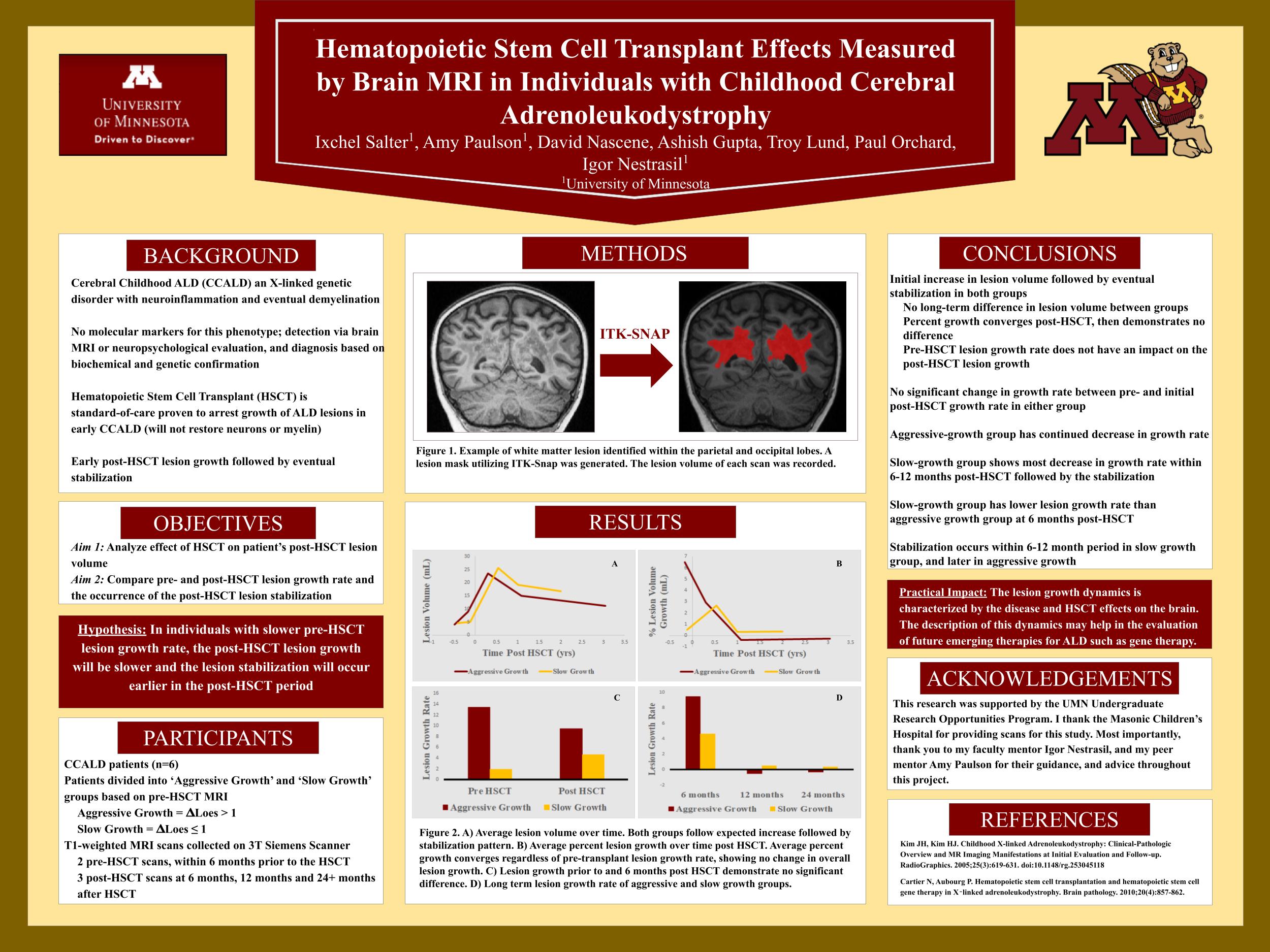Stem Cell Transplant Effects Measured by Brain MRI in Individuals with Childhood Cerebral Adrenoleukodystrophy
Adrenoleukodystrophy (ALD) is a genetic disorder that results in the accumulation of very-long-chain fatty acids leading to neuroinflammation and subsequent demyelination (Moser et al., 2007). Childhood Cerebral ALD (CCALD) is a phenotype characterized by rapid cerebral demyelination, resulting in lesions in the brain. The goal of this study is to analyze the effect of hematopoietic stem cell transplantation (HSCT) and the rate of lesion progression through quantitative magnetic resonance imaging (MRI) analysis. Specifically, this study will analyze the post-transplant lesion volume growth rate and will relate it to the pre-transplant lesion volume and age at transplant. The hypothesis is that the post-transplant lesion volume growth rate will be slower in individuals with lower pre-transplant lesion volume, with lesion stabilization occurring more rapidly in individuals with slow pre-transplant growth rate. T1-weighted MRI scans of patients diagnosed with CCALD were quantitatively analyzed via ITK-Snap technology to measure the effect of HSCT on lesion volume. Both groups demonstrated an initial increase in lesion volume followed by long term stabilization, indicating that post transplant lesion growth is likely associated with pre transplant lesion size, as well as mechanisms associated with HSCT transplant. In contrast, aggressive pre transplant lesion growth rate was associated with higher post transplant lesion growth rate, and longer stabilization times in comparison with the slow growth group. The hypothesis was supported that lesion stabilization did occur more rapidly in individuals with slower pre-transplant lesion growth, however, there was no significant difference in long term lesion volume.
